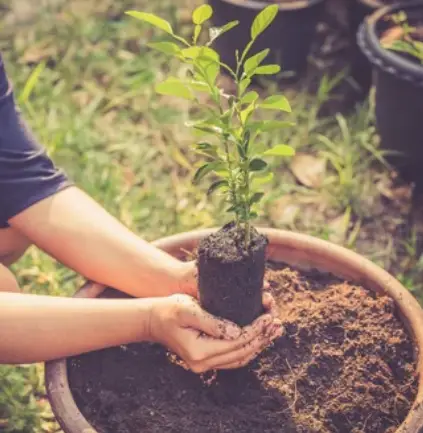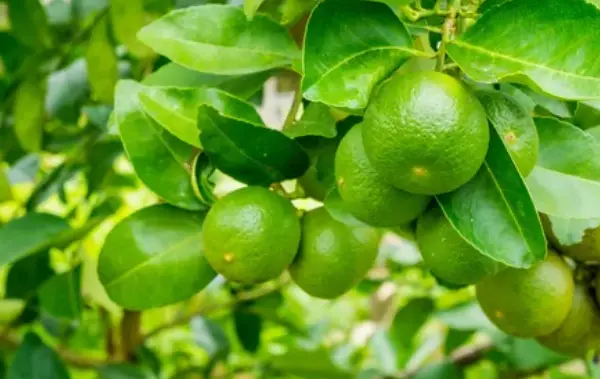Limes are a delicious and versatile fruit that can be used in a variety of dishes, from margaritas to curry.
But have you ever thought about growing your own lime tree?
Not only is it a fun and rewarding hobby, but it also means you’ll have a constant supply of fresh, juicy limes right at your fingertips. And the best part?
Growing a lime tree from seed is not as difficult as you might think.
So, In this post, we’ll take a look at the steps you need to take to successfully grow your own lime tree from seed, as well as tips for caring for it once it’s established.
So, whether you’re a gardening enthusiast or just looking for a new hobby, growing a lime tree from seed is definitely worth a try.

Growing Lime Trees from Seeds
How to Grow Lime From Seeds
Growing lime from seeds can be a fun and rewarding experience, but it does take some patience and care. Here are the steps to successfully grow your own lime tree from seed.
- Start by selecting high-quality lime seeds. You can purchase them from a reputable nursery or online seed supplier.
- Next, prepare a seed tray or pots with well-draining seed compost soil. Remember to moisten the compost soil before sowing the seeds.
- Sow the lime seeds on the surface of the compost, spacing them out evenly. Do not cover the seeds with compost as they need light to germinate.
- Cover the seed tray or pots with a clear plastic bag or a sheet of glass to create a mini greenhouse. This will help to keep the compost moist and warm, which are ideal conditions for germination.
- Next your seed tray or pots in a warm, bright location. A temperature of around 18-20°C (65-68°F) is ideal. The seeds should germinate within 1-3 weeks.
- Once the seedlings have germinated, remove the plastic bag or glass and place the seed tray or pots in a bright location, but out of direct sunlight. Keep the compost moist, but not waterlogged.
- When the seedlings are large enough to handle, transplant them into individual pots filled with a good quality potting compost.
- Once your lime seedlings are well established in their pots, gradually acclimatize them to the outdoor conditions before transplanting them into their permanent location in the garden.
- When planting your lime tree in the garden, choose a location that gets plenty of sunlight, and is protected from strong winds.
- Water your lime tree regularly and fertilize it with a balanced fertilizer every four to six weeks during the growing season.

Growing Lime Trees from Seeds
Growing lime from seed is a bit of a waiting game, but with patience and care, you will be rewarded with a healthy and productive lime tree. With a bit of TLC, you will be able to enjoy the sweet and tangy taste of home-grown limes in no time.
Caring for Your Lime Tree
Once your lime tree is established in its permanent location, it is important to continue to care for it properly. Here are some tips for ensuring the health and productivity of your lime tree:
Watering
Lime trees prefer well-draining soil and moderate moisture. Water your tree deeply and regularly, but be careful not to over-water it. A good rule of thumb is to wait until the top inch of the soil is dry before watering again.
Fertilizing
Lime trees benefit from regular fertilization. Use a balanced fertilizer every 4-6 weeks during the growing season. It’s best to apply fertilizer after watering, so it can be fully absorbed by the tree.
Pruning: Prune your lime tree as needed to remove dead or damaged branches, and to maintain its shape. Pruning also encourages new growth, which can lead to more fruit production.
Pest and Disease Control
Lime trees are generally hardy and resistant to pests and diseases, but they can be affected by certain issues such as scale insects, mealybugs, and fungal diseases. Keep an eye out for any signs of infestation or disease and take action as soon as possible to prevent it from spreading.

Harvesting:
Limes are typically ready to harvest when they are fully mature and have turned yellow. You can test the maturity of lime by gently squeezing it – if it gives a little, it is ready to be picked. To harvest, simply twist the lime gently from the tree, taking care not to damage the branch.
A lime tree is a wonderful plant for any garden and a great source of fresh fruit. With proper care and attention, your lime tree will provide you with delicious, juicy limes for many years to come.
Other Things To Note When Growing a Lime Tree
How do Long Lime Trees take To Germinate?
The thing to keep in mind when growing lime from seed is that it may take a while before your tree starts producing fruit. Lime trees can take anywhere from 3 to 5 years before they start bearing fruit, so don’t get discouraged if you don’t see any limes right away.
Propagating Lime Tree
It is worth noting that lime trees can be propagated by rooting cuttings as well. This method is faster than growing from seed and can produce fruit in a shorter time frame. However, it’s not as exciting as growing from seed, and there is always a risk of the tree not taking root or not being true to the parent tree.
When it comes to the type of lime, there are a few different varieties to choose from, such as the common Persian lime, the smaller Key lime, and the more exotic Kaffir lime. Each type has its own unique flavor and uses in cooking, so think about what you want to use your limes for before deciding which variety to grow.
Climate
You should also consider the climate. Lime trees are tropical plants and can’t tolerate frost. So, if you live in an area with cold winters, you’ll need to grow your lime tree in a container and bring it inside during the colder months.
You should also be aware that lime trees can grow quite large and may need a lot of space. So, if you’re limited on space, it might be better to opt for a dwarf variety of lime tree that will stay smaller and easier to manage.
In the end, growing lime from seed can be a fun and rewarding experience. With a bit of patience, care, and knowledge, you’ll have a thriving lime tree in no time and enjoy the delicious fruit it produces.
Final Thoughts
Growing lime from seed is not a difficult task, but it does require patience and care.
Following the steps outlined in this post and providing your lime tree with the proper care, you can successfully grow your own lime tree and enjoy the sweet and tangy taste of fresh limes from your very own backyard.




